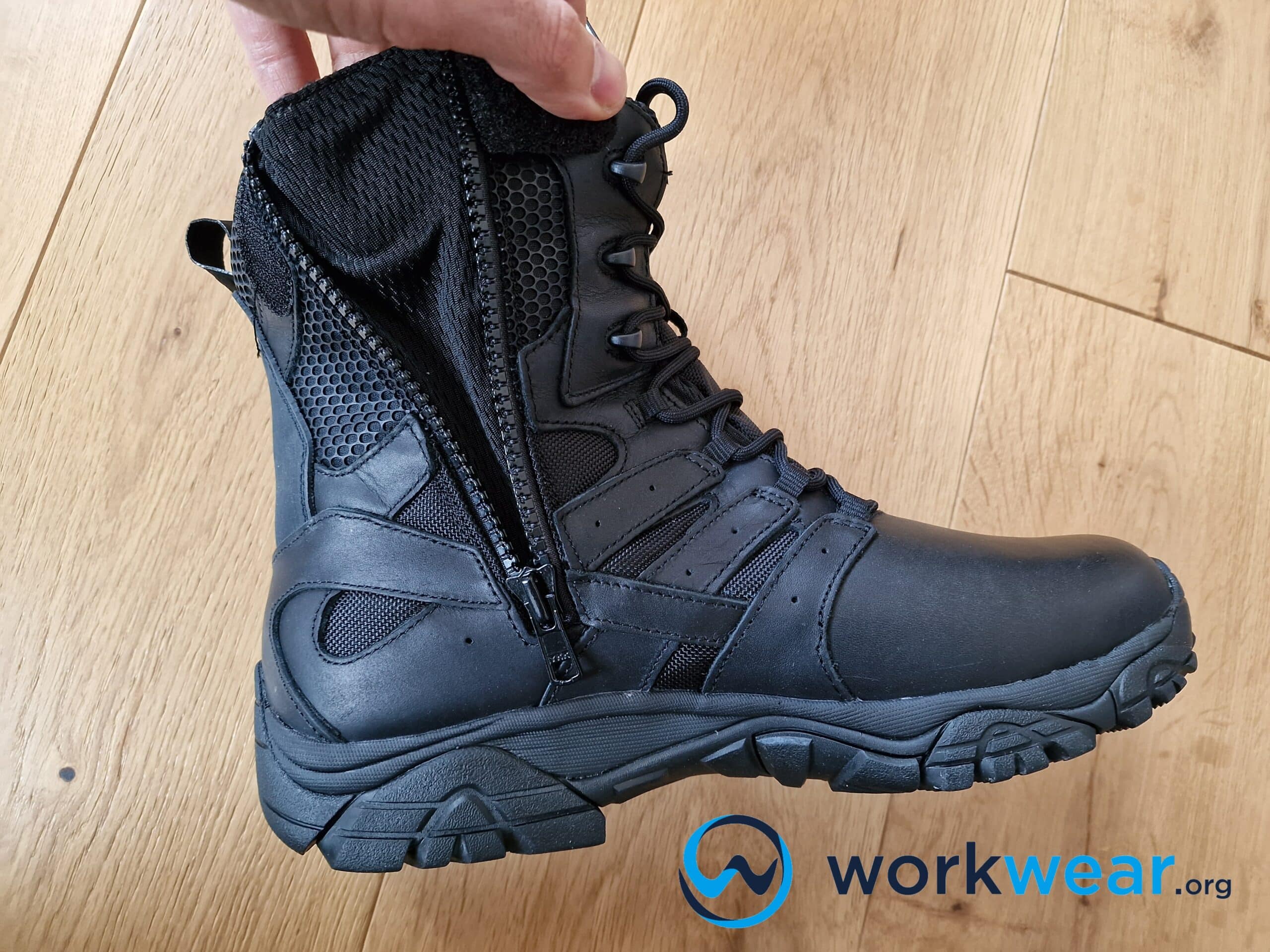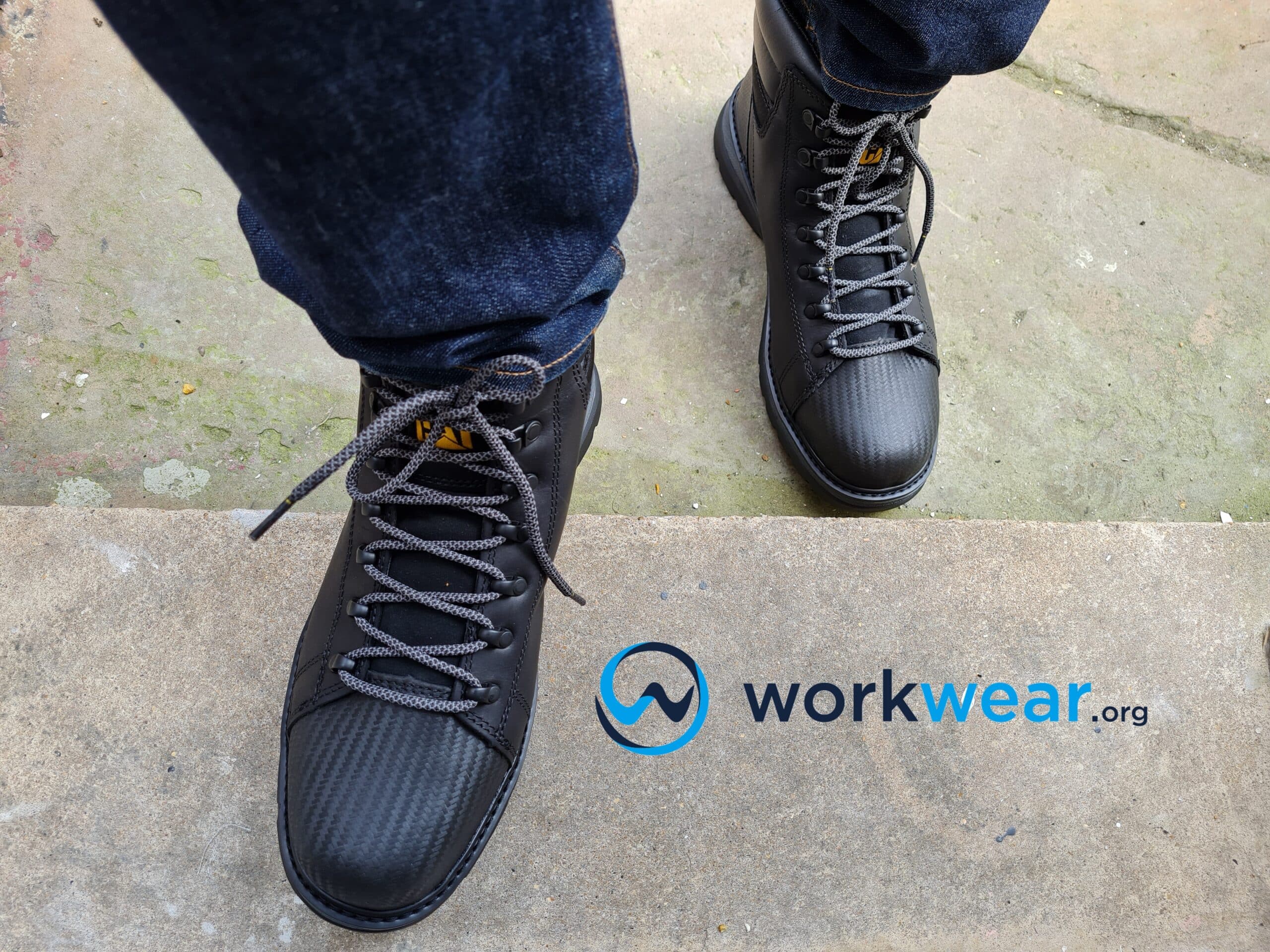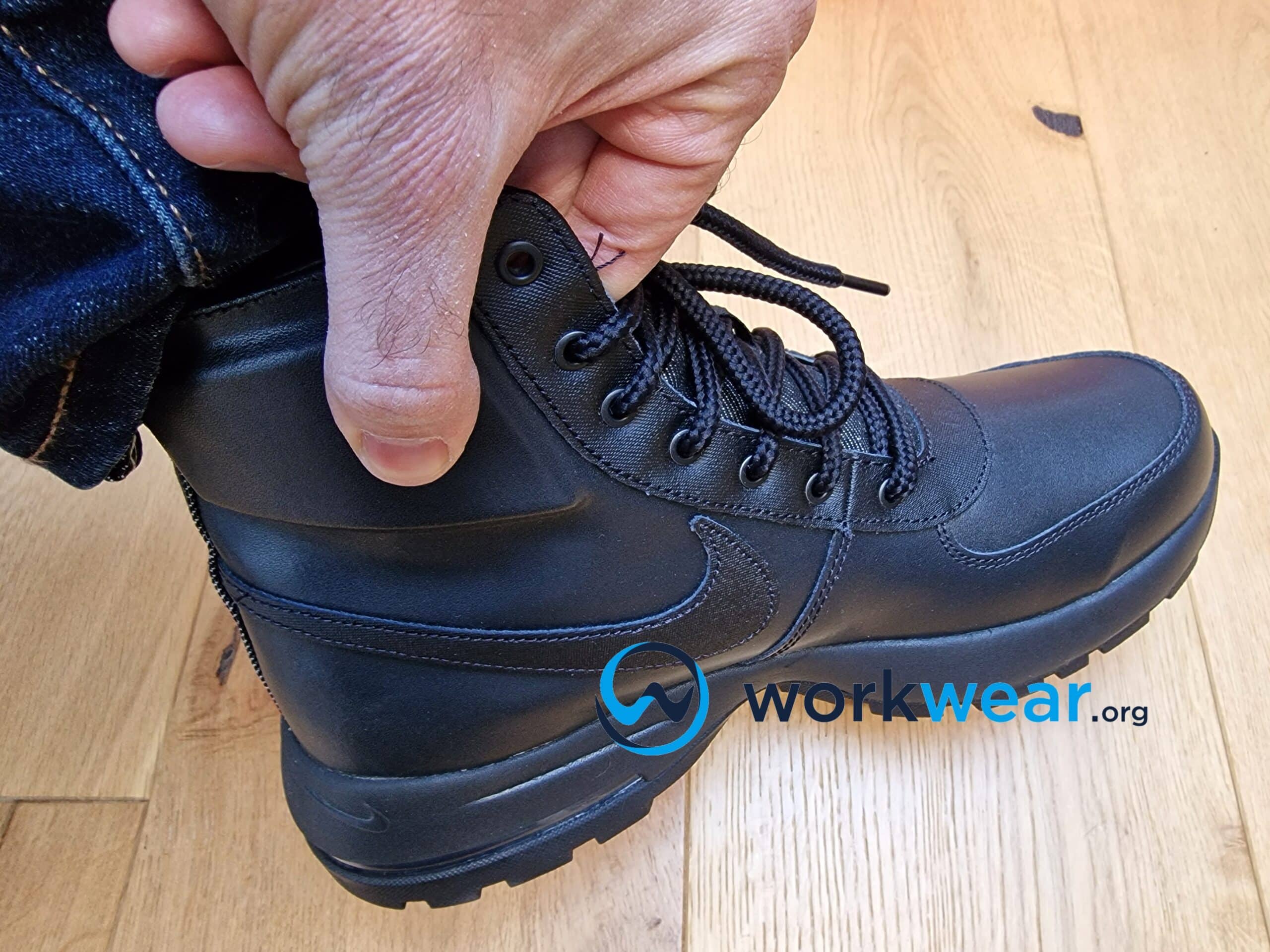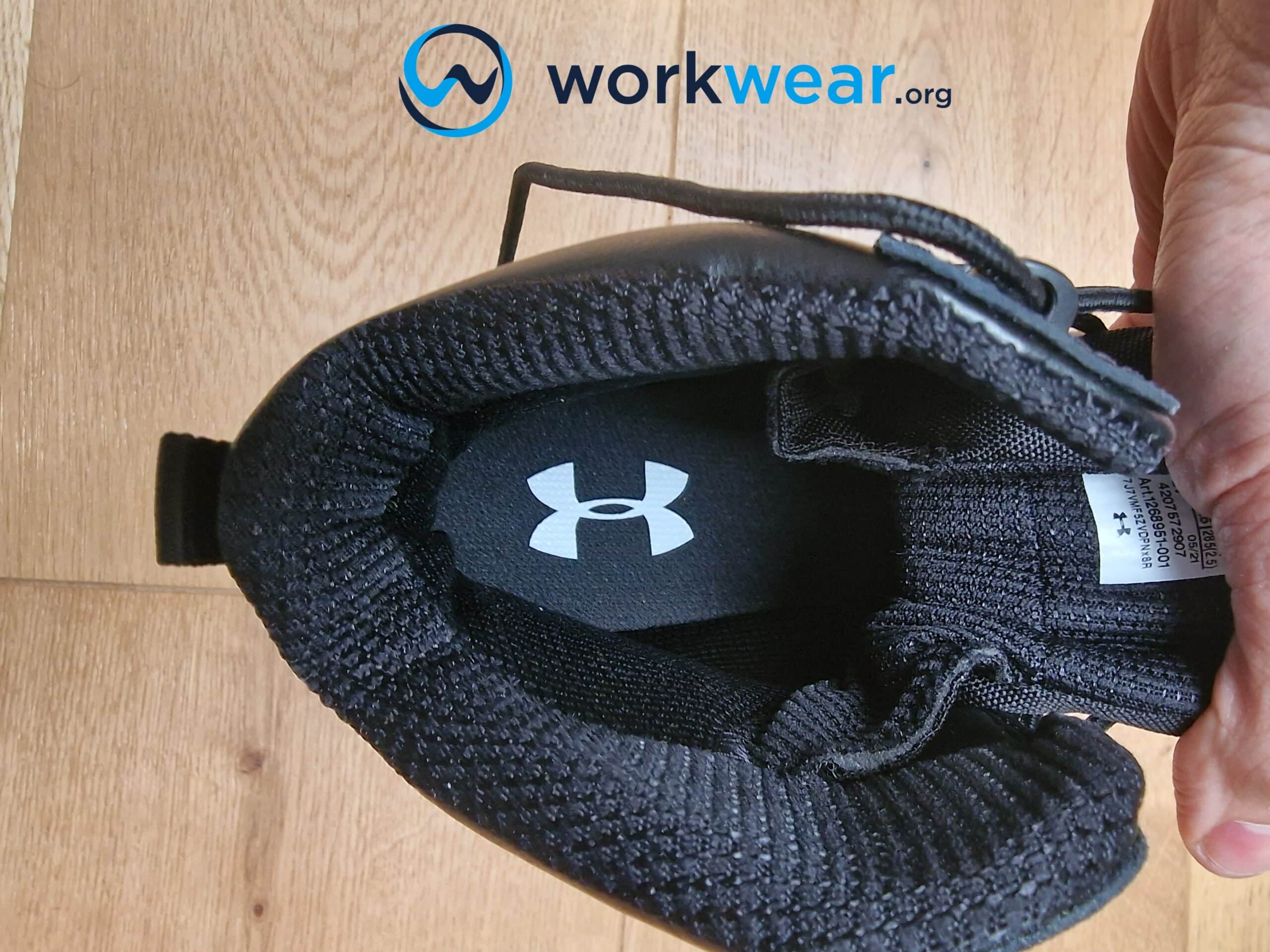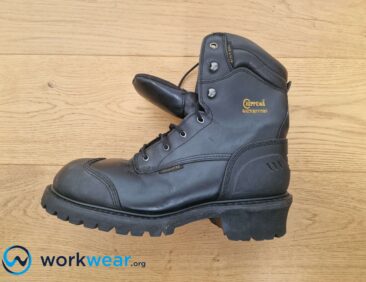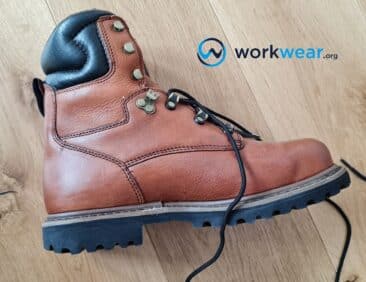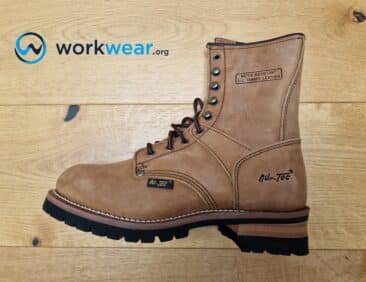4e Wide Work Boots What Are They
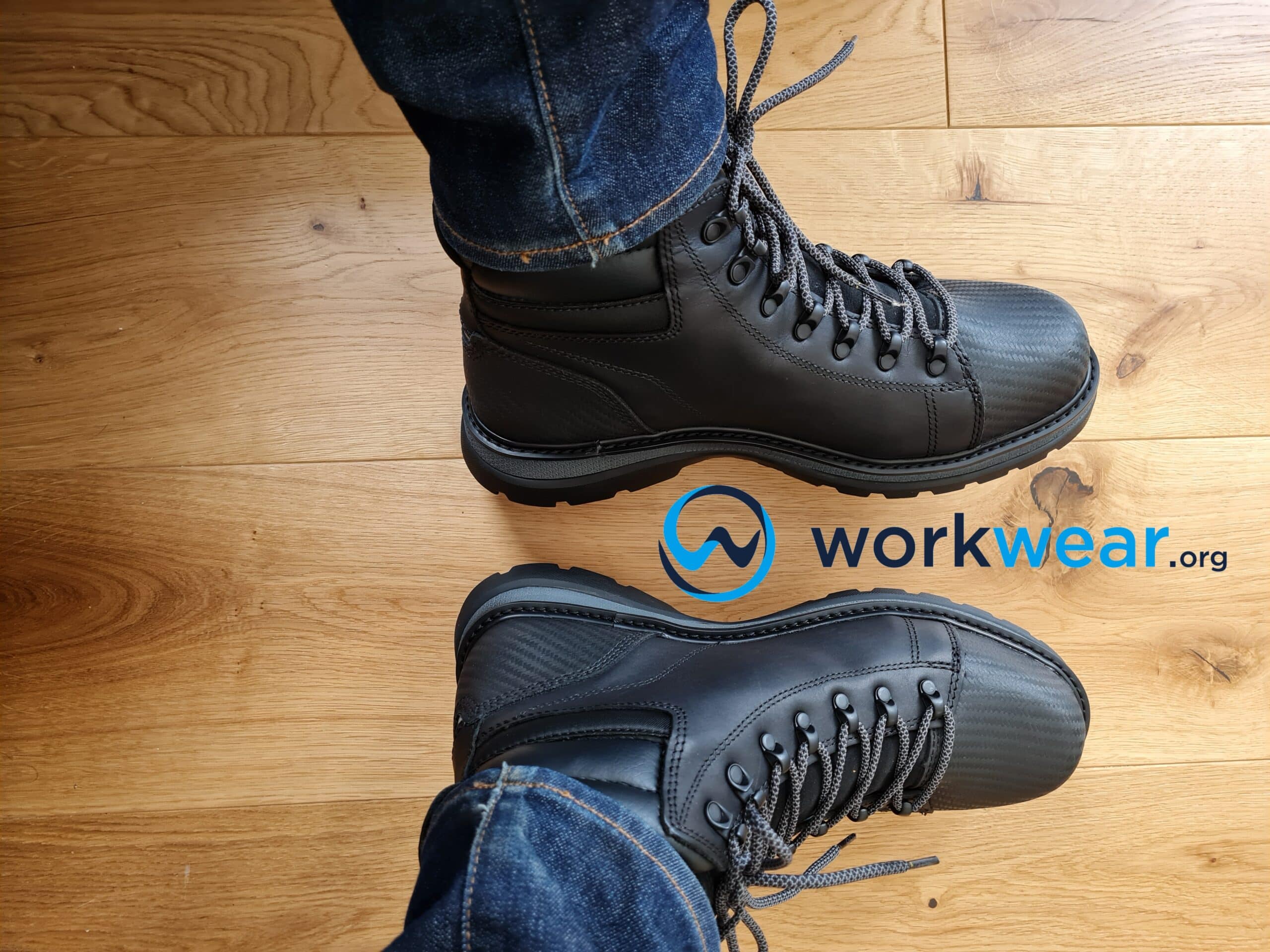
When choosing work boot sizes, it’s normal to think of the options in terms of length without considering the footwear’s width. This isn’t an issue for those who have normal feet widths, but those with wide feet will need to consider sizing options that are wider than the usual ones offered. Choosing the appropriate footwear width will ensure that the work boot will have enough space on the toe box and forefoot areas, preventing a painfully cramped feeling or an uncomfortably loose fit. Wide width work boots have roomier toe boxes and wider forefoot areas to accommodate wide feet as well as the insertion of orthotic insoles if necessary.
4E wide work boots are much wider than footwear with regular widths. Even if they have a wider forefoot and more spacious toe box, the heel section is generally the same as that of work boots with standard (non-wide) sizes. The specifications of incremental width increase from one size to the next can vary from brand to brand, so it’s important to keep this in mind as well.
In this article, we’ll look at more details regarding 4E wide work boots and how they can offer functional and comfort benefits to those with wide feet.
When to Use Wide-Width Work Boots
For people with normal foot widths, a great fit can easily be achieved by choosing the right boot size – going for a larger size for more space and picking a smaller option for a snugger fit. However, if you discover that moving up or down a size only results in an awkward fit but doesn’t resolve the cramped feeling, then it may be time to consider choosing wide width boot options. One of the signs that can indicate the need for wide width work boots is a cramped feeling on the sides of the feet even if the length seems comfortable enough. In this case, going for a larger (but not wider) size will leave a larger space on the toe box or heel, which can cause an unstable feeling or painful chafing.
Wide sizes often have increased depth as well because wide feet tend to be taller than those with regular widths. The deeper structure of wide width footwear – such as 4e wide work boots – is also designed to accommodate orthotics that may be needed by those with extra wide feet. In general, a work boot becomes deeper with increasing width. It’s even more important to get the appropriate wide size option for safety toe work boots as the toe caps can dig more uncomfortably into wide feet.
What a 4E Wide Size Means
The letter “E” indicates a wide size in boots for men and an extra wide size for women’s boots. As more letters are added – or as the number attached goes higher – the wider the footwear becomes. For example, a work boot that has an EE (or 2E) size is wider than an E-sized one. In general, each increment corresponds to a quarter of an inch added to the boot’s width – although this may vary depending on the manufacturer’s size specifications. A 4E (or EEEE) wide size refers to extra wide size work boots typically for men only, since the 2E size is already considered extra wide for women’s footwear.
More manufacturers are now offering extra wide width options for work footwear. These brands may have varying width indications and specifications, so it’s important to keep this in mind when comparing (and eventually, choosing) 4E wide work boots that fit your requirements.
The Difference Between Wide and Extra Wide Widths
In general, wide work boots have almost the same structure as standard medium-width footwear. Their heel areas often have the same width, but the forefoot and toe box areas of wide options are typically broader, allowing wide feet and toes to spread out naturally. On the other hand, extra wide work boots tend to be broader all throughout – from the heel to the forefoot and toe box areas – compared to footwear with medium and wide widths. It should be noted, though, that the structure of work boots with wide and extra wide widths may be different across various brands. The work boot’s style should also be considered, as there are some designs that tend to be more spacious even with medium width options.
Benefits of 4E Wide Work Boots
Prevent Cramped Feet Problems
4E wide work boots have much wider toe box and forefoot sections compared to standard width footwear. The roomy construction gives wide feet the extra space needed so they won’t be forced into a painfully tight space. With enough room to accommodate wide feet, they can be protected from rubbing painfully against the sides and top of the boots.
Prevents Corns and Toe Deformation
Constant rubbing and pressing against the boots’ sides can result in the development of corns. Extra wide work boots are designed to comfortably house wide feet, so the sides don’t press and chafe against the skin and bones. As a result, blisters and toe deformation can be avoided even with continuous boot use for long periods. The wider construction is also more forgiving to toes with irregular shapes, giving them enough wiggle room and protecting them from being squished into the sides.
More Comfortable Safety Toe Boot Use
Safety toe caps – such as steel or composite toes – can sometimes be felt when walking, especially when using tight-fitting boots. Extra wide work boots are equipped with toe boxes that have a larger vertical clearance compared to footwear with standard widths. The spaciousness promotes more comfortable walking as the toe caps aren’t pressed too tightly against the toes and won’t dig into the skin with every foot movement. It also helps avoid problems with blood circulation, which can happen if the toe cap repeatedly presses into the toes.
Accommodate Tall Feet or Swollen Toes
4E wide work boots are designed with deeper toe box structures than regular width footwear. This increased depth is beneficial for accommodating wide feet that also tend to be taller or bulkier than feet with average widths. The toe box will also have more room to welcome swollen toes in a comfortable way, preventing further discomfort that may otherwise result from using tight-fitting boots.
More Room for Orthotic Insoles
The deeper toe box that’s fitted into 4E wide work footwear also makes it possible for orthotic insoles to be positioned properly into the boot. This enables the special insoles to deliver enhanced cushioning and support without making the boot feel too tight in the process.
FAQs
- Are wide and extra wide sizes universal across all brands?
- Generally, there are slight variations across all brands when it comes to the difference between wide and extra wide sizes. Not all brands specify their exact width measurements, but the difference between a wide and extra wide work boot ranges from .25 (⅟4 inch) inch to .375 (⅜ inch) inch increments.
- Do people with wide feet need to automatically choose wide or extra wide sizes for work boots?
- Not all the time. Size measurements may vary across brands, so it’s still best to check out the specific model’s specifications before deciding to go for a wide size. For example, the Skechers Wascana Benen Tactical Boot offers a relaxed fit in regular/standard width sizes that may be enough to accommodate relatively wide feet – although the boot is also available in wide fit options.
- Will 4E wide safety toe work boots feel more comfortable than standard width footwear?
- It depends on the feet’s shape and width. Extra wide feet or those with swollen or irregularly shaped toes may feel more comfortable with 4E wide safety boots. However, this size may feel unstable or uncomfortably loose for regular sized (non-wide) feet.
- Do all brands that offer wide sizes also have 4E extra wide footwear sizes?
- Not always. There are brands (such as Wolverine and Bates) that offer medium and extra wide width options, while others (including Carhartt) have medium and wide width options but no extra wide sizes. Other manufacturers – including Thorogood – offer a wider range of width options including normal/medium width, narrow, wide, and extra wide.
Conclusion
Extra wide footwear offers the spaciousness that’s needed by wide feet to be able to perform efficiently and comfortably. 4E wide work boots are designed with wider forefoot and toe boxes to protect wide feet from the discomfort that often comes with using narrow footwear. Their generously proportioned construction also includes a deeper (compared to standard width options) toe box that welcomes the placement of orthotic insoles for superior cushioning and support. They’re also built to be roomy enough to accommodate misshapen or swollen toes, preventing deformation or other injuries from developing.
